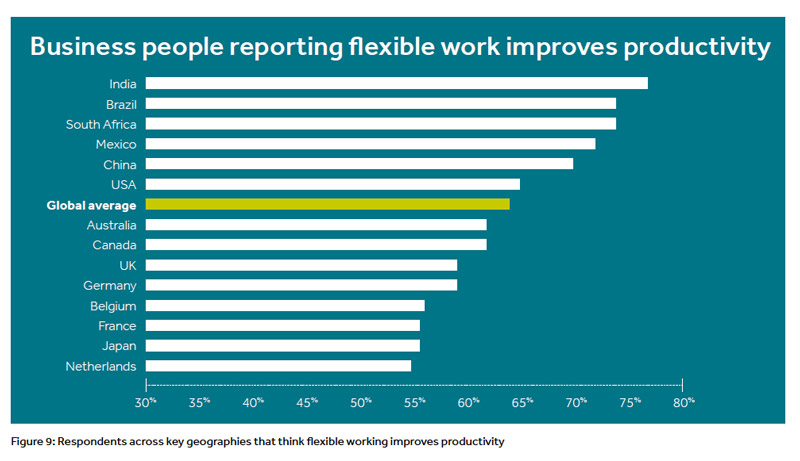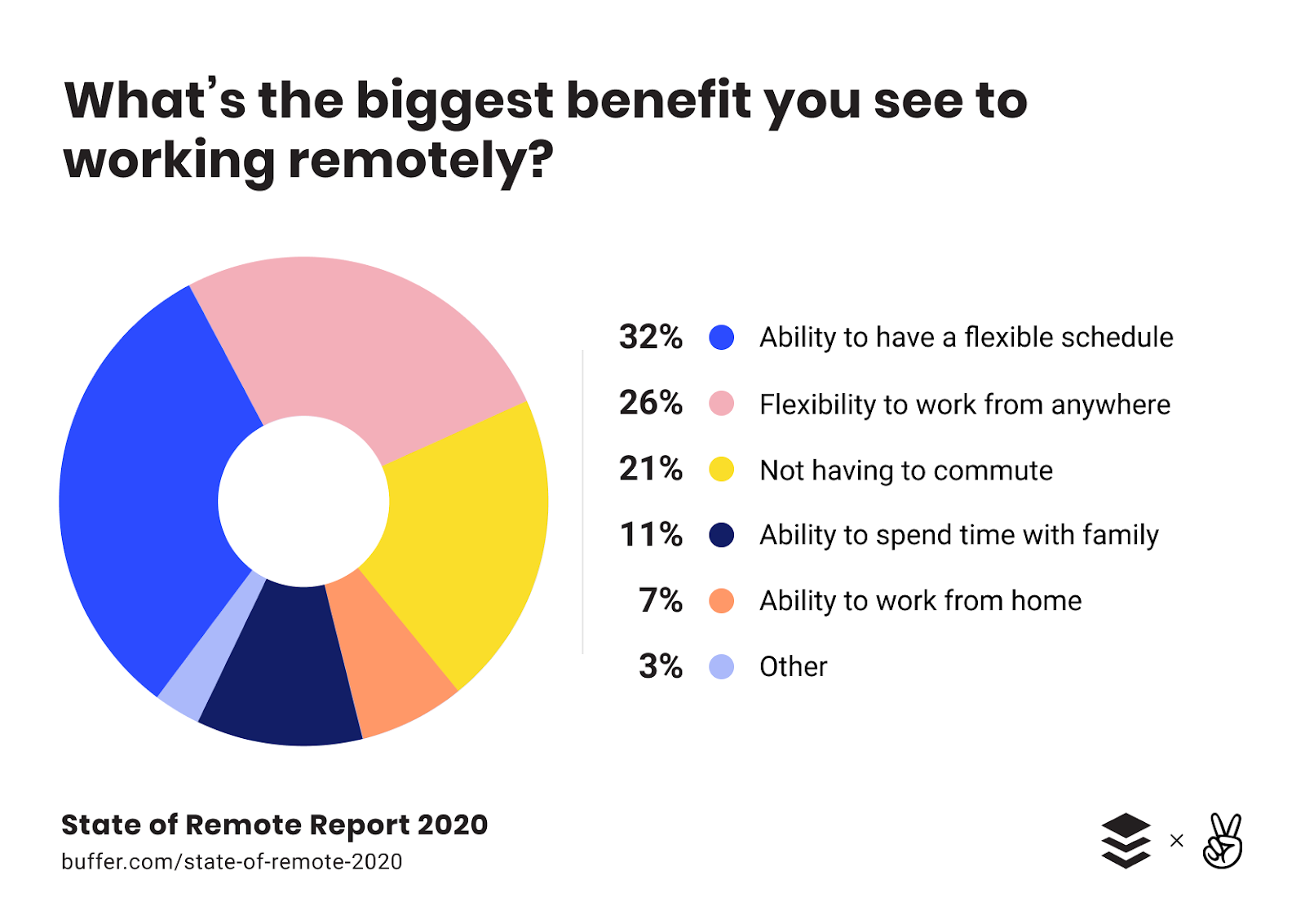What the workplace looks like has changed significantly in recent years. Workplaces no longer rely on a central office or a nine-to-five workday for a company to run successfully. This pattern is seen worldwide and is a change that workers are embracing. In fact, a survey conducted in 2022 shows that 63% of workers choose flexibility as the benefit that matters the most to them.
But what is a flexible working schedule, and how does it work for both employees and the larger business?
We’ll look at the different variations of flexible schedules and what they mean. We’ll also assess some of the pros and cons of this style of work. Hopefully, you’ll recognize the role that flexible schedules could have in your work environment and the ways they can adapt to the needs of your employees.
What is a flexible work schedule?
Being flexible can manifest itself in many ways in a work schedule. Usually, this is in terms of the hours worked, or the location employees work. This can make it easier to balance working alongside other obligations or appointments. For example, these arrangements can be beneficial in supporting employees who:
- Are parents
- Care for vulnerable people
- Work on multiple projects simultaneously
Flexible work schedules are ideal for those working office-based jobs, as they can move their workstation or adapt their work hours while still working on projects. For example, a flexible work schedule would suit you if you want to start your own affiliate program or contribute to marketing.
In some industries, flexible schedules can raise issues, particularly when dealing with customers and clients. Nonetheless, adjusting work schedules to suit your employees can benefit them and your business.

How flexible schedules work
There’s no one way of creating flexible schedules, and, with some research, you can find a whole host of different structures that employees use to schedule their work. Depending on the requirements an employee has, different approaches will be taken to schedule their workday.
That being said, some flexible work schedule models are often used by companies, which we’ll look at in more detail.
Part-time
Perhaps the most common form of flexible working is taking on a job role part-time. This means the employee works fewer hours per week than full-time employees. Part-time hours can vary greatly but it usually means working no more than 35 hours a week.
Part-time work is often used by students or parents wanting to split their day between working and either studying or caring for their children.
Some jobs may also be advertised as being part-time positions if the role doesn’t fill the typical working hours required of a full-time job. Positions in administration or bookkeeping may fall into this category. The workload will depend on the size of the company and the quantity of work, and for smaller businesses this may not stretch to enough for full-time hours.
Flexi Hours
Typically, with flexi hours, the employer will set the core hours of the day when employees and team members must be working. However, employees have freedom over when they start and finish, encouraging better staff engagement.
For example employees may be able to start work earlier or later in the day depending on their preference, with this then having an effect on what time they finish. Or perhaps they can spend two days working at home but must be in the office for the other three days of the week
Flexi hours usually come with some limits regarding when workers must be active online or in the office, making scheduling meetings easier. Yet if some flexibility is needed to attend appointments, this is provided.
Job Sharing
Two or more people may work in the same job, dividing the hours required between them. This means the employees can work fewer hours while the business doesn’t lose out on productivity.
Those who are partaking in the job share work together on projects and tasks, although often at different times. The split of the job share hours and responsibilities are tailored to the preferences of those involved.
Remote Working
Particularly for those with long commutes or overcrowded offices, remote working presents an option to perform your job role from outside the centralized business office.
A remote working setup connects to your servers and software through internet connections, joining meetings online. This helps employees find a work environment that suits their needs, using their equipment from another location.

Annualized Hours
By setting an annual total of hours that employees must work, a business can give workers the freedom to choose when they work.
This allows employees to work more hours some months so they can have more time off another month or not work in an emergency but make up the hours later. As long as they meet the total hours required by their business, it doesn’t matter how these are distributed.
Pros and cons of a flexible work schedule
Flexible working schedules aren’t for everyone, and, depending on the type you go for and the business you work for, there may be some cons to consider.
Likewise, there are team communication factors to be anticipated and questions to be answered about which methods to use. Nonetheless, the reason flexible working is popular is due to the many pros it also has.
Some of the factors surrounding flexible schedules may come across differently due to your perspective and the working preferences of your employees. Having open discussions can help ensure you make the right choice.
Adaptable
One of the big reasons to use flexible working schedules is the ability to adapt them to suit your employees and their situations.
Likewise, as circumstances change for employees, you can review their work schedule and select an approach that enables them to work well. This makes your workplace more inclusive by recognizing the different needs of your team and supporting them to do their best work by removing limiting factors.

Employee Autonomy
Flexible schedules give your employees more freedom and ownership over their work routines. This enables them to create a good work-life balance. This can improve employee wellbeing and job satisfaction, as they have the power to make changes to improve their workday.
However, for managers, this can make it harder to track their team members and organize meetings. This requires more effort to stay informed of different people’s availability or a team management software.
Productivity
Everyone has a different body clock, so when one person feels motivated may not correlate with others or specified work hours.
By working to a schedule that suits your employees, they’re more likely to be productive and produce better work.
Even so, depending on the individual, the increased freedom over work schedules could lead to more procrastination, as they may not have others working at the same time to maintain focus and encourage progress.
There are a variety of different methods you could use to mitigate procrastination amongst your team and therefore increase productivity. Help them to set up a dedicated workspace free of distractions and ensure they have all the necessary tools to make document sharing and communication as easy as possible.
Consider tracking performance instead of hours to give a greater sense of accountability. Keep the lines of communication open and encourage your workers to get in touch in an informal way with any issues or problems they may have.
Communication
A challenge of having employees with different schedules can be trying to encourage teamwork. If no one is around at the same time, this makes group work and asking for help difficult, such as when needing assistance in how to create a pdf.
Nevertheless, having flexible schedules may improve your team’s communications throughout projects. By adapting to asynchronous working, your team can enhance their information sharing to keep everyone informed.
But make sure all team members receive training in whichever communication tools you choose. If you’re using a VoIP phone system you want all workers to know how to get the most out of it and not need to ask, “Why should someone use a VoIP number?”
Could flexible work schedules suit you?
The idea of a flexible work schedule is that it suits you and your circumstances. If you find one type of flexible schedule has more cons to it, that doesn’t mean you should give up on the whole idea.
Perhaps another type of schedule would be more suited to you or your employees. As they’re flexible, you can change the schedules to try different ways of working and establish which option provides the most benefits.
With knowledge of some of the most popular types of flexible working schedules and an awareness of possible pros and cons, you can decide to change your workday.
This is also useful to know when managing others and enabling your team to work in a way that suits them. Then you can identify the equipment and support your employees need to make the most of their flexible working arrangements.







